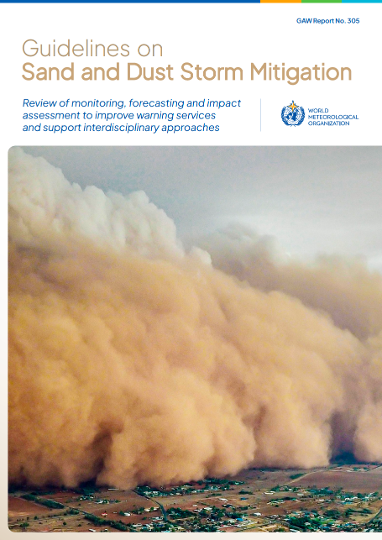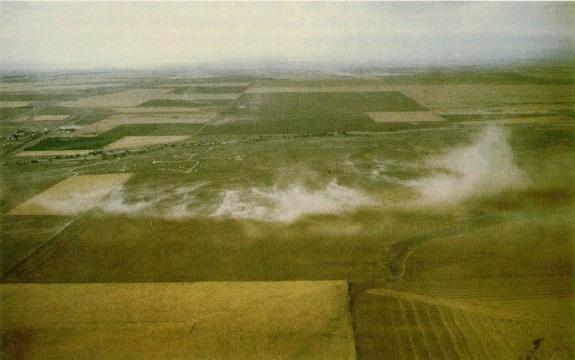Aviation - Hazards - Dust Storms and Sand Storms

Dust Storms and Sand Storms
Dust storms and sand storms are regions of raised dust and sand. The dust and sand are essentially raised by the wind, and are lofted to various heights dependent upon turbulence and instability and persistency of the flow that lifted the particles.
The size of dust and sand particles ranges from slightly sub-micron to several hundreds of microns. Smaller and lighter particles will be lifted more readily and to greater heights, and take longer to settle out, while the larger particles may remain airborne only for short distances of a few hundred metres.
Drastic reductions in visibility are likely to accompany dust and sandstorms. Effective visibility may very likely be close to zero in some circumstances.
Dust and sand ingestion into aircraft engines may cause reductions in power to the extent of complete engine failure. Should dust and sand find their way into cockpits, then problems with electrical equipment may occur.

In 2025 WMO published Guidelines on Sand and Dust Storm Mitigation (GAW Report No. 305). The Guidelines offer a review of the monitoring, forecasting and impact assessment of sand and dust storms to improve warning services and support interdisciplinary approaches. The effect of sand and dust storms on transportation, including aviation, is given in Chapter 1.5 of the Guidelines.
Haboob

A type of dust/sand storm generated by convective downdraughts is known as a haboob. Simply stated, the surface outflow from the downdraught raises the dust and sand. The mechanism is similar to the microburst discussed in the Turbulence section of these Aviation Hazards notes. In this scenario, the general wind speeds may not be considered sufficient to raise dust or sand, but the local speed up of wind due to the downdraught and its related instability provide the mechanism.
